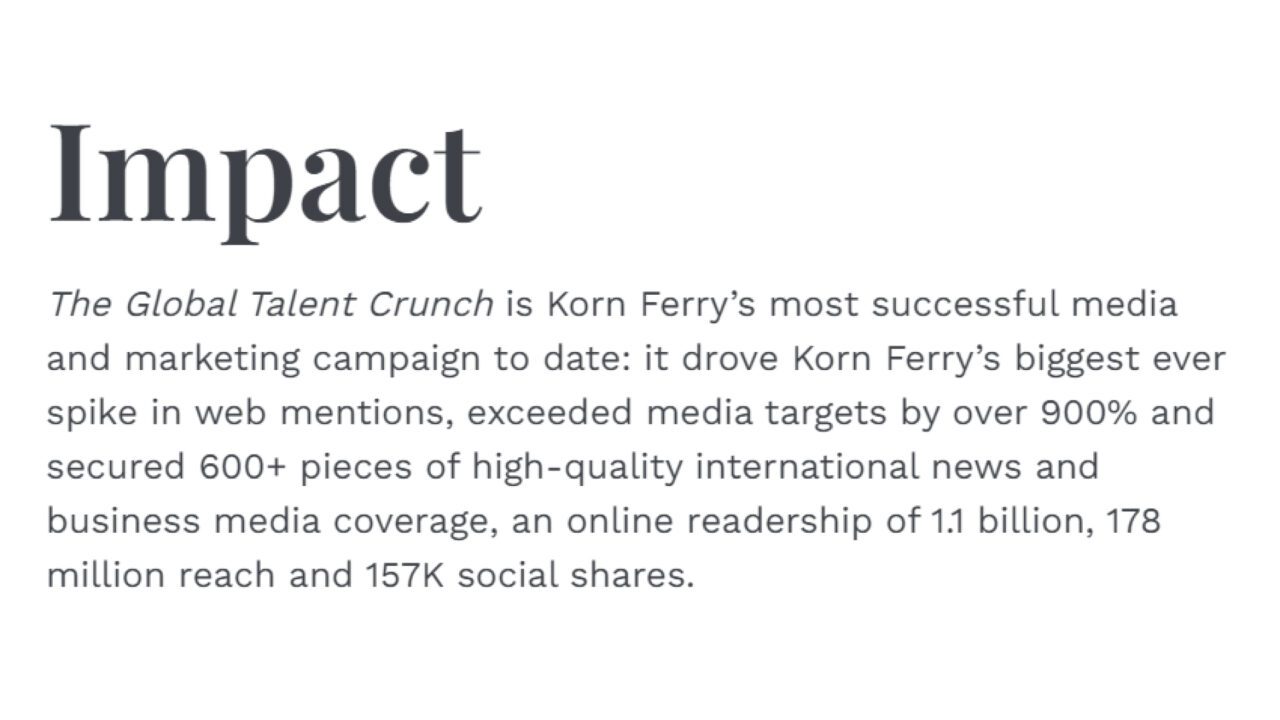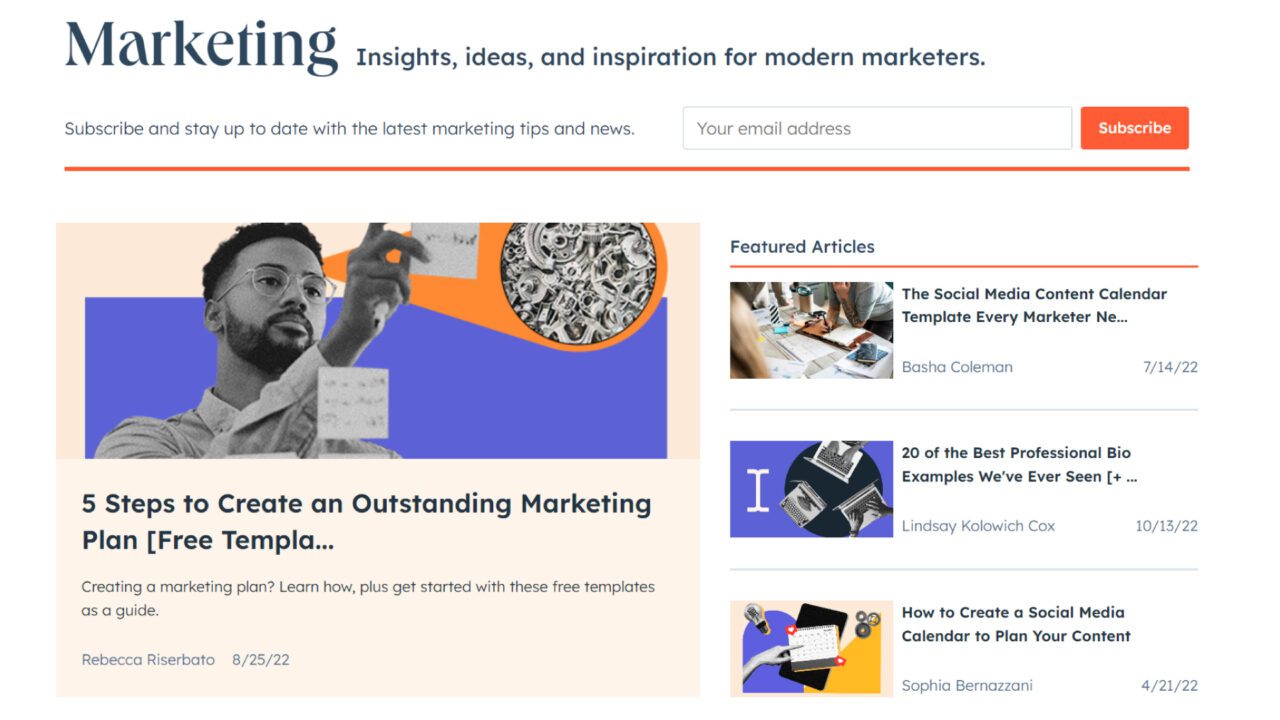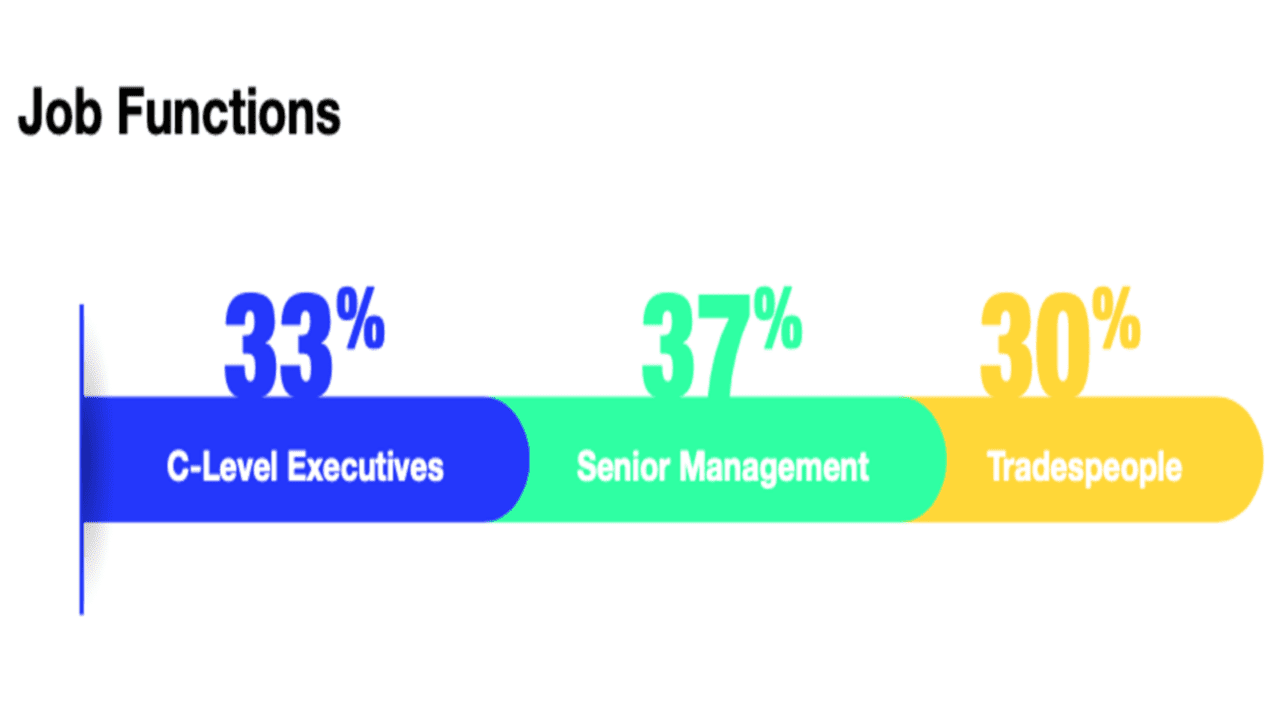As a Chief Marketing Officer, establishing your brand as an authority in your industry is essential for building trust, attracting potential customers, and ultimately driving sales. One effective strategy for achieving this is through thought leadership—sharing your insights and expertise on industry topics and trends to position your brand as a go-to source for valuable information.
In this blog post, we’ll take a closer look at three B2B brands that have successfully leveraged thought leadership to build their authority and gain a competitive edge in their respective markets. By examining their strategies, we can identify a few key takeaways that you can implement as you get started on your own thought leadership marketing strategy.
Thought Leadership Examples by B2B Brands
Building brand authority isn’t easy, but it’s not impossible. Here’s how these innovative brands are making their mark in their industries.
Korn Ferry
Korn Ferry is a leading global consulting firm, most well-known for their executive search capabilities. However, they wanted to reposition their brand as an organizational consultancy that offered more than that. To do so, they partnered with an innovative B2B marketing agency to create a global C-suite thought leadership campaign that would build their brand authority in that regard.
Korn Ferry showed us what great thought leadership looks like – a radical new vision of the future backed by robust research and data. The vision was a simple yet powerful one: the next threat to hit global organizations and economies alike would be the talent crunch.
The best practices of thought leadership were also clearly evident in their actions. They produced original content, inventing a groundbreaking new economic model to challenge the accepted model of labor economics and support their claims. They were also consistent in their messaging. They developed and released a suite of supporting content including reports, videographics, infographics, blogs and an interactive salary surge calculator over the course of a 9-month global marketing campaign.

Hubspot
Hubspot is an all-in-one CRM solution provider and one of the most well-known thought leaders when it comes to inbound marketing. They should be since the phrase “inbound marketing” and its underlying concepts were coined in 2005 by HubSpot’s co-founder and CEO, Brian Halligan. On their website, you can find a wealth of information on any topic that falls under the larger concept of “inbound marketing,” ranging from simple how-to blog posts to longer and more comprehensive pillar pages on complex topics.

They also have a different blog on Sales and Operations
Hubspot’s content is a main driver of their thought leadership strategy, from which we can learn an important lesson: content synergy matters. While Hubspot has produced various content on different business functions like marketing, sales, customer service, content management, and operations, they are bonded by the single unifying theme of “inbound marketing.”
Their ability to pull on disparate strands of content topics while maintaining consistency in their messaging really differentiates Hubspot as an authority.
Avontus
Avontus has been a leading software solution provider for the scaffolding and access industry for more than 20 years. Their longevity and experience have primed them to assume the mantle of thought leadership in an industry that currently lacks a clear thought leader. Similar to Korn Ferry, Avontus had a radical new vision of the future of the scaffolding industry, one powered by exciting new technologies like 3D, VR and AR.
To support this vision, Avontus released a comprehensive industry report derived from an international survey of scaffolding business leaders and workers, providing valuable insights into the industry’s technology maturity level, investment trends, and digital solutions among others.

One lesson we can take away from Avontus is how they tailored these insights to be relevant. Avontus didn’t just survey the digital landscape of the scaffolding industry and tell the story of a changing world – they presented real business implications, and highlighted the new competitive advantages to be exploited from this change. For example, 87% of their respondents noted an increase in operational efficiency after implementing scaffolding software, a competitive advantage easily accessible to those in the scaffolding industry.
Start Building Authority with Thought Leadership
Based on the three B2B brands that we studied above, besides concluding that quality content serves as the foundation of any thought leadership campaign, we have also gleaned valuable insights concerning the importance of
- creating original, well-researched content,
- creating synergistic content
- creating relevant content
To find out how you can tie these insights together and apply them to your own thought leadership content strategy, you can check out this interview with an experienced B2B marketing agency director, which contains even more unexpected insights you might find useful.



